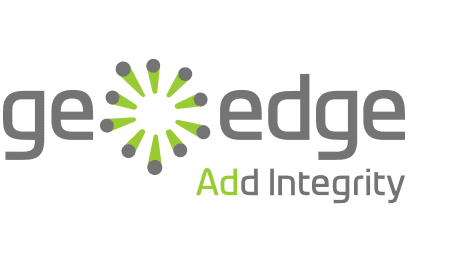What is Malvertising? Understand How It Works & How to Protect Against It
What is Malvertising?
There are several paths malvertisers can pursue to reach their target user on sites via standard display, video, or in-app environments.
How Malvertising Works?
Auto-Redirect
URL malvertising
Malicious ad cloaking
Malvertising campaigns
Mobile Malvertising campaigns
Malvertising on landing pages
Placing malicious code
Redirecting Pop-Ups
In this method, when the user opens a website or application, the bad ad will take over the screen. From there, it might direct the user to the app store to download an unwanted app. In other cases, it might show a message saying the user has won a gift card, or been invited to take part in a survey, or been exposed to a system risk that can only be fixed by clicking through.
Malware slithers its way through advertising into users’ devices in a variety of ways – through everything from direct-sold campaigns to indirectly sold ads from exchanges or networks. Secure your site with real-time protection.
Malicious Ad Delivery
Methods
A bad actor inserts harmful code into the supply path as the ad is being called.
The user clicks on a malicious ad. A series of URLs are called to bring up the ad’s landing page. Malicious code may be inserted by any third party along that path.
Just like any tracking pixel, a malicious pixel signals to the malvertiser that the user has interacted with the ad in a specific way — at which point the pixel triggers the payload.
How scammers get past platforms (DSP) Malvertsing detection:
Just as malvertising and malware are frequently conflated, so are malvertising and adware. Again, there’s a difference.
Malvertising Malware Types
Malvertising is a tactic used to get users to install malware, either directly in the digital ads, or by directing the user to a page on a malicious website where they are prompted to download a malicious program.
Malware-infected computers can impact the user experience, appearing frightening or annoying. In other situations, the user might not even notice that anything has happened. But no matter how the user experiences it, ad malware is a criminal enterprise. Examples of malvertising often include using unwanted advertising to install spyware in order to get ahold of the user’s credit card or financial data, either to steal money from them or to sell that data to other criminals.
These are common types of malware used in malvertising campaigns:
Examples of malvertising campaigns
Impostor
The online advertisements in this type of attack redirect the user to malicious websites that resemble a local or regional law enforcement site. The malicious code then takes over the browser, changing to a full-screen box with no exit option, and displays a message telling the user they owe a fine, and that paying the “fine” will unlock their browser.
Hermexx
GeoEdge identified this bitcoin-related cloaking scam in early 2021. It fingerprints the user’s computer or device and environment, focusing on factors like time zone and IP. It often shows a sensationalistic or clickbait-style message in the creative, which can be served through server-side and client-side channels. When a non-targeted user clicks on the ad, they are taken to a harmless site. When a targeted user clicks, they are taken to a malicious site with a cryptocurrency scam.
Morphixx
When this threat first appears at the DSP level, it does not have its payload and often counterfeits the URLs of popular websites to bypass creative scanners. After several days, platforms are acclimated to the campaign’s presence, and at that point, its ads are deployed with the malicious payload.
Morphixx uses IP data to geotarget users and serve a personalized message in the creative and landing page, which is common practice in contemporary ad targeting, but previously less common in malvertising. The message appears to be from the user’s ISP, using the ISP’s branding and local language. The page prompts the user to complete a survey or sweepstakes, which is the means to extract sensitive information. Sometimes these landing pages will go so far as to include comments from fake users about the survey and the rewards they won.
Malvertising in Landing Pages
How Do Malvertisers Evade Detection?
Trends in Malvertising: Fake Ads
Examples of Fake Ads
Misrepresented Medical Equipment
This includes ads for subpar face masks, COVID tests/treatments that don’t even exist, treatments and equipment that aren’t government-approved for medical use, and products that don’t resemble the images used to advertise them.
Surge Prices
Throughout 2020 and 2021 bad actors sold hard-to-find medical equipment at predatory prices, a tactic premium publishers generally don’t want their advertisers to employ.
Tabloid-Style Celebrity Images
These include classic clickbait “celebrities in peril” headlines (“You won’t believe what happened to…”) and ads suggesting falsely that a celebrity has endorsed the product.
Mobile Malware Threats
The small screen offers particular opportunities for malvertisers. Users on mobile are often in a hurry, looking for a quick solution, so they have little patience for interruptions. Small screens with delicate response make erroneous clicks on ads a nearly inevitable phenomenon. Unfortunately, there is sometimes a symbiotic relationship between app developers and ad platforms: If an ad platform is paid on a CPI (cost per install) basis, and if a developer relies on that platform to distribute ads to drive up downloads of the application, then the platform is essentially incentivized to run more ads from buyers they’re not necessarily familiar with yet. This makes it easier for bad actors to slip their campaigns through.
Auto-redirects affect both mobile and desktop, but especially mobile. GeoEdge research found 72% of all redirects occurred on mobile.
How Auto-Redirects Work
The GeoEdge team estimates that malicious activities cost industry stakeholders publishers upwards of $1B million annually, including identification, documentation,and remediation
The Cost of Malvertising for Publishers & Platforms
Malvertising costs publishers and ad networks valuable time and resources they spend looking for malicious ads and in loss of potential revenue.
Malvertising attacks are detrimental to a publisher’s reputation, so businesses need to act swiftly in order to protect their users from harm and reassure partners. However, the process of tracing the source of a bad ad — including communicating with demand sources and other supply-chain partners — is time-consuming and exacting, and it takes digital professionals away from the projects that help move the business forward.
Furthermore, the more malvertising they experience, the more likely users are to take matters into their own hands and install ad-blocking software, which limits the publisher’s ability to monetize their sessions. “How to install ad blocker?” was one of the most searched phrases in 2021 and ad-blocking software has become a real threat to publishers’ livelihoods. Experts estimate that ad blockers cost publishers between $16 billion to $78 billion per year globally. Aside from the fact that these ad blockers prevent publishers from monetizing users’ sessions, some ad blocking software makes for a worse user experience. The software may slow down page load, and some ad blockers don’t even block all ads, but allow ads from buyers who have paid the software developer to be whitelisted with ads that could still contain malvertising.
When users choose to avoid a website because they believe it’s unsafe or the publisher doesn’t value their engagement, there’s a ripple effect on the business’s bottom line because the publisher loses the ability to monetize the lifetime value of that user. Having a reputation for hosting bad ads not only decreases traffic but also harms the publisher’s efforts to solidify relationships with business partners. Diminished traffic and reputation drive down CPMs and open the door to new ad quality issues from malicious or low-quality advertisers for whom higher CPMs would be a barrier to entry.
Anti Malvertising: Techniques for Detecting Malware
Curious how the pros do it?
How To Prevent Malvertising?
Malvertising has historically been challenging for publishers and platforms to combat because of the technical sophistication of malvertisers. Digital professionals often speak of malvertising prevention as a game of Wac-a-Mole because whenever they identify one campaign, bad actors confuse them by deploying new tactics through new attack vectors. Publishers and platforms/networks rarely have the resources to keep up with new attacks on their own, and need assistance from an ad quality vendor, whose technology is advanced enough to continually block even brand-new malvertising attacks. In 2020 and 2021, the industry saw a dramatic increase in attacks that totally evaded ad scanners — because the creative in these campaigns doesn’t use malicious code, but instead uses a creative that plays with the user’s psychology and engagement with page content.
Publishers and ad platforms/networks use any combination of common preventative methods to stop malvertising attacks before they reach audiences including:
URLs and domains used by undesirable advertisers — including bad actors in the ad ecosystem — should be proactively blocked. However, blocklists only work well at stopping known bad actors, not newly-emerging threats. Also, bad actors can evade blocklists by frequently changing the URLs they use.
Because malvertising campaigns evolve and spread so quickly, real-time protection is the most comprehensive and fail-safe protection. A well-established real-time solution, like GeoEdge’s, will be able to detect patterns in creative code that resemble already-known malvertising code — thereby allowing the publisher or platform to stop and inspect a new potential threat before it’s trending. Automated QA also speeds up in-house workflow, and allows publisher and platform teams to focus on more strategic monetization efforts.
Manual review may be time-consuming, but it’s still an important part of malware prevention. There is always a place for human insights drawn from an understanding of the full context in which the user will be seeing the ad.
All legitimate entities along the ad chain should scan creatives for potential hazards — all stakeholders need to contribute to a safe and transparent marketplace. However, scanning is a fairly basic security measure, and it looks at only a sample of all the ads coming through. Even without cloaking — which is designed to evade scanners — bad ads could easily pass.
Understanding your prospective ad partners’ history of managing malvertising threats (or failing to do so) can help you make the right decisions, with the right level of risk, for your business. Talk with your industry peers about their experiences with your prospective partners as well.
How To Spot Malvertising?
Common indications that you are being targeted for malvertising if you see a sudden increase in CTR, an in-banner video, or negative social media mentions, there is a good chance that you are being targeted for malvertising.
Sudden increase in CTR on display ads
The CTR in the 2020s is generally low, but clickbait-style “fake ads” favored by malvertisers today have an unusually high CTR. This ostensibly positive development might actually indicate your site is under attack and your users are being duped.
In-banner video on the site or platform
The presence of banner ads with video is not necessarily a sign that you’re currently under attack, but it’s a good indicator that one or more of your demand partners has been compromised, or is dropping the QA ball. Tell your demand partners if you’re seeing IBV, and ask for details about their security measures.
Negative social media mentions
When a user wants to complain to a company, it’s often faster and more convenient for them to do so on Twitter, Facebook, or a customer review site than it is to email the company. A publisher or customer support team must remain vigilant and search for mentions of the company’s name in connection with ad malware or a malvertising attack.
How To Remove Malvertising?
Without the aid of trustworthy, high-tech solutions for detecting malvertising or malware and keeping it from your site and platform, the process can be daunting. Low-tech or standard processes are often heavily manual, error-prone, and reactive rather than proactive.
For many web publishers who choose to handle malvertising outbreaks on their own, the first sign they see of their site being affected will be from users, reaching out via email or social media. An attack can set off a mad dash to remove the bad ads from the site and try to trace them back to their demand sources, a process that is especially frantic when an attack occurs outside of business hours or weekends, as is often the case. That’s why detecting unwanted advertising is difficult. So how do anti-malvertising researchers detect a malicious ad? They often use advanced tools like:- Signature Based
- Checksumming
- Reduced Masks
- Known Plaintext Cryptanalysis
- Statistical Analysis
- Heuristics
The threat of malvertising is too great to digital company’s users, partners and overall business to manage it after the fact — and today’s malvertisers are too wily for anything other than real-time blocking to suffice.
Malvertising is truly the tip of the iceberg, and a real ad quality partner addresses less-obvious threats to users, as well as the concerns advertisers have about the environments where their ads appear.
Manual review may be time-consuming, but it’s still an important part of malware prevention. There is always a place for human insights drawn from an understanding of the full context in which the user will be seeing the ad.
Don’t make the mistake of focusing on one vector of attack, at the expense of the next vector malvertisers might favor.
For brand safety, for good user experience, and to secure users’ trust in a publisher’s website, ad content and page content must be aligned. Among publishers, 91% believe heavy-handed and overly broad blocklists hurt their overall revenue. More control over categorization allows in more of the right ads for the right environment.
When GeoEdge blocks an ad, it inserts a clean ad the publisher has approved in advance, so the user’s session will still be monetized fully.
Look for a reputable partner who has persevered through several waves of malvertising trends, and has shown a positive track record throughout. A trustworthy partner should have deep experience and a commitment to continued research and product development.
A reputable ad quality partner must deliver not just technology, but human response and understanding. Look for customer support that responds rapidly and internalizes the needs and desires of your business.
Anti-Malvertising Ad Protection Software
Malicious advertising is so complicated that it makes sense ad security and quality is a thriving subset of the digital ad industry. The rapid spread of auto-redirects alone spawned a cottage industry of solutions aimed specifically at stopping redirects. But in choosing an ad quality partner, it’s important to choose a provider who has proven success in combating a wide range of ad security and quality issues, not just the malvertising trend du jour. In vetting a partner to help prevent malvertising and a wide variety of other security and quality threats ask whether your potential partner has these characteristics.
GeoEdge is unique among cybersecurity and ad quality vendors in that it enacts all of these characteristics, and serves as a committed partner to your business rather than simply a vendor. True ad quality partnership transcends malvertising and malware and addresses the countless subtleties and unseen threats in digital media. Reach out to the GeoEdge team today to learn what we can do together to detect and stop malvertising.





